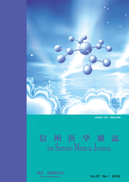Volume 61, Issue 2
Displaying 1-10 of 10 articles from this issue
- |<
- <
- 1
- >
- >|
Foreword
-
2013Volume 61Issue 2 Pages 43-44
Published: April 10, 2013
Released on J-STAGE: May 08, 2013
Download PDF (208K)
Review
-
2013Volume 61Issue 2 Pages 45-56
Published: April 10, 2013
Released on J-STAGE: May 08, 2013
Download PDF (1108K)
Originals
-
2013Volume 61Issue 2 Pages 57-64
Published: April 10, 2013
Released on J-STAGE: May 08, 2013
Download PDF (249K) -
2013Volume 61Issue 2 Pages 65-73
Published: April 10, 2013
Released on J-STAGE: May 08, 2013
Download PDF (789K)
Case Report
-
2013Volume 61Issue 2 Pages 75-82
Published: April 10, 2013
Released on J-STAGE: May 08, 2013
Download PDF (597K)
Current Topics
-
2013Volume 61Issue 2 Pages 83-84
Published: April 10, 2013
Released on J-STAGE: May 08, 2013
Download PDF (201K)
Round the World
-
2013Volume 61Issue 2 Pages 85
Published: April 10, 2013
Released on J-STAGE: May 08, 2013
Download PDF (181K)
My Choice of Speciality
-
2013Volume 61Issue 2 Pages 86
Published: April 10, 2013
Released on J-STAGE: May 08, 2013
Download PDF (237K)
Book Review by Author
-
2013Volume 61Issue 2 Pages 87
Published: April 10, 2013
Released on J-STAGE: May 08, 2013
Download PDF (184K)
Proceedings
-
2013Volume 61Issue 2 Pages 89-116
Published: April 10, 2013
Released on J-STAGE: May 08, 2013
Download PDF (2583K)
- |<
- <
- 1
- >
- >|
